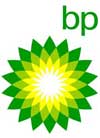 Current Prices Near Lows Even Though Surplus Stocks Revised Higher
Current Prices Near Lows Even Though Surplus Stocks Revised Higher
Global macro landscape is brighter, especially with dovish central banks. Oil market rebalancing has temporarily stalled in 3Q16, but it should resume strongly in 4Q with much more robust demand growth. Global supply is declining with sharp declines in non-OPEC crude/condensate more than offsetting increases in non-crude liquids and OPEC crude production. Prices are currently too low and should rally from here. Political risks to supply have turned higher. U.S. crude exports should pick up and contribute to substantial U.S. crude stock draws in August and September. Refinery margins will be weak this autumn as ample light product stocks will be slow to work off.
Don't Count on WCSB Production Losses
Conventional wisdom suggests that the cure to low natural gas prices ultimately rests with producers. Yet, despite the record slump in cash prices, Canadian production appears to be defying convention, increasing ~0.3 BCF/D year-on-year during the first half of this year, with producer and midstream companies guiding toward a relatively stable supply outlook ahead. Robust Canadian production underscores the general resilience of North American supply, with slowing WCSB production growth more than offsetting declines from other conventional resources. In contrast to the Lower 48, where take-away pipeline has limited shale growth, only modest declines are taking hold this summer with Canadian production poised to rebound this winter.
French Nuclear Debacle
An unusually high number of French nukes are offline for maintenance, bringing the load factor of French nuclear down to a multi-year low during July. Assuming nuclear stays at minimum levels of the historical range would bring French prices up to the low €40/MWh during the winter months. The current proposal of the carbon floor is shaping up as a penalty on coal units, which would have a very limited impact on shorter-term prices, but it increases the risks of retirements. The risk of plant closures, with oil units already being retired, makes French prices more likely to move toward Spain and Italy in the medium term. We see the UK market unable to balance for at least 90 hours in the upcoming winter, without calling CBR. Base and peak spark spreads for the winter ahead have surged in anticipation of these risks.
U.S. Social Cost of Carbon Estimates: An Emerging Standard?
There is wide range in views on the optimal price of carbon — often based on price levels needed to achieve emissions reduction goals. U.S. government estimates of the social cost of carbon utilize a methodology based on academic models that calculate avoided damages. Already used for federal cost-benefit calcs, more recently these estimates have been used in international agreements, for state-level policy, and as a carbon price standard with commercial implications for energy market players. PIRA's report discusses how the social cost of carbon is calculated and used and how modeling choices lead to an estimate that reflects political realities as well as scientific calculations. Implementation of carbon prices generally ends up well below estimates of carbon’s social cost.
Are Low Wheat Prices Sustainable?
While most traders remain focused on production estimates for U.S. corn and soybeans, the wheat market quietly made a 10-year low of $4.035 for the prompt contract last week, and quietly is exactly the way the Non-Commercial shorts like it. The Non-Commercial short in SRW is quickly approaching 145K contracts according to last week’s COT, while the HRW short is nearer 37K contracts. Depending on how you look at some of these numbers the SRW short is probably the third largest in history and may even be at a record currently.
Sluggish Growth Data from U.S., but Better Data from Europe/Asia
The latest U.S. GDP release disappointed, as it showed the pace of year-on-year economic growth slowing in recent periods. But underlying data suggested that a growth pick-up will materialize soon — after all, a large portion of the recent weakness was due to an inventory drawdown, and this will not continue; and outside of business investment, key activity sectors are in good shape. In the euro area, the pace of second quarter GDP growth matched expectations, and the resilience in business confidence surveys paints an encouraging picture for near-term growth. In South Korea, second quarter growth exceeded expectations, and a recent strengthening in industrial activity is encouraging for the outlook.
Freight Market Outlook
Rates in all the major tanker sectors in July have already hit or are fast approaching 2016 lows. Rates are unlikely to improve before the fourth quarter, although fleet capacity growth this year will also limit prospects for a meaningful winter rally.
U.S. Ethanol Prices Fall
U.S. ethanol manufacturing margins worsen. RIN generation increases. D6 values near $1.00.
No Relief for Asian LPG Prices
Far East destination markets are rioting against an avalanche of LPG supply in-flows. Cash propane and butane cargo prices plunged last week, well below the newly printed Saudi Contract Prices. The prompt paper arbitrage to the Far East from the Arab Gulf plunged to near zero, indicating that even if freight was free, little money could be made by bringing cargoes to the region. Even more troubling, cash Far East prices are performing even worse, with physical C3 and C4 being called well below August CPs. PIRA believes that the recent glut may be partly due to the recent opening of the new lock system at the Panama Canal. Asia is now being barraged by USGC cargoes, arriving from both the east and west, and canal cargoes (with their significantly shorter voyages) are arriving before cargoes that set out earlier on the Horn of Africa route.
U.S. Stocks Keep Building
Crude stocks disappoint again, showing a 1.7 million barrel build as imports approach high of year at 8.44 MMB/D. Cushing crude stocks have largest build (1.1 million barrels) since early May. Reported product demand continued to improve, rising 150 MB/D on the week to a strong 20.8 MMB/D.
Increased Risks of a "Hard Landing"
The prospect of new record-high storage in the U.S. and western Canada raises the risk for a “hard landing” for prices this season. While it appears unlikely that the market will once again probe sub-$2 prices, weakening fundamentals are at odds for sustained $3 prices — with the likelihood of a relapse looming ahead.
Price Gains Continue, but Mainly Weather-Driven
On-peak price levels and volatility soared in July amid strong cooling loads. Palo Verde on-peak prices averaged above $40/MWh, up more than $10/MWh from June. Mid-Columbia also gained $10/MWh to average in the low $30s. California hubs saw more modest ($5-6/MWH) gains to the high $30s. Bullish price action at the front of the curve has had relatively little impact on price forecasts with the exception of Palo Verde, where we believe a more bullish stance is justified, particularly for spring/summer 2017. In the near term, however, prices and heat rates are likely to ease as short-term weather forecasts indicate below-normal temperatures in the inland Southwest. In contrast, California heat rates are likely to increase as the call on gas generation reaches its annual peak in August/September amid ongoing gas storage constraints.
Financial Stress Stable
The S&P 500 was little changed on the week. Volatility remained low. Emerging market debt and high yield debt pulled back on the week. The dollar was generally weaker, particularly against the yen. It was noticeably stronger against the Russian ruble.
Cap Freight Rates Expected to Leap in 2H17
Cape demand is being boosted by improvements in 2Q16 Chinese steel industry numbers and the expansion in Guinean bauxite trade to China. Cape utilization is set to tighten notably in 2H17 and into 2018. Along with stronger bulker prices, PIRA expects a surge in freight rates in 2H17.
Potential Market for International Aviation Emissions
Emissions from aviation make up a small share of total global emissions, but they are growing quickly. The International Civil Aviation Organization is expected to unveil a program to keep post-2020 emissions at 2020 levels at its upcoming triennial assembly in September. PIRA estimates that, based on the most recent draft, it could cover at most 60-65% of total global aviation activity — requiring around 2 billion metric tons to be offset between 2021-2035. The main UNFCCC offsetting mechanism (CDM) should meet demand for offsets, but supply risks are related to the need to avoid double-counting of emissions reductions. Compliance costs are expected to make up a small share of jet fuel prices.
Inventories Draw
The week ending July 22, stocks draw to less than 21 million barrels for the first time in seven weeks. Production drops to 988 MB/D, falling from a record 1,029 MB/D the prior week.
Will Corn Prices Repeat?
Year-over-year price action similarities in corn have been hard to ignore. Last year, Dec. ’15 corn made a high of $4.5425 in early July. This year’s high of $4.49 was made in mid-June. Last year’s selloff was 97 cents from the highs. This year’s selloff, so far, has been 115.75 cents. Not a perfect match either timing-wise or price-wise, but close enough that a look at last August’s price action is warranted as July comes to a close.
Japanese Crude Runs Rose, Imports Moved Higher and Stocks Built
Crude runs rose 81 MB/D on the week, reflecting the restart of Hokkaido. Refinery capacity continues to look underutilized, which suggests discretionary run cuts are occurring. Crude imports moved higher and crude stocks built 1.45 MMBbls. Finished product stocks built by 0.9 MMBbls, mostly due to a rise in naphtha. Refining margins remain very poor and should be inducing discretionary run cuts.
Weakening Fundamentals Pressure Prices
Although the forecast heat will likely limit August stockpiling for the first half of the month, less constructive fundamentals developing in the second half increases the risk of regional congestion. The prospect of new record-high storage in the U.S. and western Canada raises the risk for a “hard landing” for prices this season, with the month-on-month gains recorded in July likely reversing by September.
Short Distances on LNG Trade Protecting Spot Market Profitability
The emerging growth in Australian LNG output will make less and less room for other LNG supply to push its way into Asia from distant regions. Australia is still only producing 160-mmcm/d (up 90 mmcm/d year-on-year) and remains at a mere 51 % of the total production capacity (315-mmcm/d) it will have in place by 2019.
U.S. May 2016 DOE Monthly Revisions
EIA just released its final monthly May 2016 (PSM) U.S. oil supply/demand data. May 2016 demand came in at 19.20 MMB/D, which showed growth of 85 MB/D, or 0.4%, versus year-ago. Gasoline, kero, and resid all outperformed. Distillate and “other” underperformed. Versus the weeklies, demand was revised lower by 1.1 MMB/D, with "other" revised lower by 627 MB/D, distillate lower by 257 MB/D, and gasoline lower by 213 MB/D. This comes on the heels of an 800 MB/D downward revision in the final April figures, when reported last month. Versus PIRA's Reference Case outlook, May is 450 MB/D less than forecast. End-May total commercial stocks stood at 1,384.1 MMBbls, which was 17.2 MMBbl higher than the preliminaries and 20 MMBbls higher than PIRA had assumed in its balances.
Storage Congestion Concerns Back on the Table
Thursday’s lighter-than-expected U.S. storage build, coupled with an anticipated single-digit addition to inventories for next Thursday’s report, should register as the lightest additions to working gas inventories for the remainder of the cooling season. These relatively low builds have helped propel the newly minted prompt contract beyond $2.90/MMBtu but bely weekly injections thereafter that could easily average 35-40 BCF, as cooling degree days seasonally decline in August.
Coal Stocks Now Flat Year-On-Year
In the face of sharply warmer-than-normal cooling conditions across most of the eastern and southern U.S., PIRA estimates that U.S. coal stocks are near flat year-on-year at 156 MMst. Though this remains above-normal target levels, some regions are drawing very close to normal seasonal target levels.
Global Equities Are Mixed
Global equities were modestly mixed on the week. Outside the U.S., the markets moved, on balance, higher. The international sectors were led by Japan and Europe, though Norway declined as oil prices weakened. In the U.S., the market was largely unchanged, though technology, retail, and housing moved noticeably higher. Energy lagged and declined on the week.
Asian Demand Update: Slowing Growth Along Expectations
PIRA's latest update of Asian product demand shows a slowdown in growth from last month but still strong. The deceleration is concentrated in both China and India, but other Asian countries showed improvement, with either stronger growth or smaller year-on-year declines. Data actuals cover the three month period April-June for China, India, Korea, and Japan so this snapshot picks up the most timely data in the largest countries. Overall Asian demand growth slowed from 1.35 MMB/D in the June assessment to just over 1 MMB/D in the latest snapshot.
Ukraine Raises Industrial Gas Price
“New natural gas prices for industrial consumers and other business entities have been increased by 9% on average compared with the prices in June-July 2016, taking into account the price situation on the European natural gas market,” Naftogaz reports. The natural gas prices from the company’s resource are differentiated depending on the volume of purchases, payment conditions and the state of previous payments.
Coal Price Rally Continues; China Providing Stimulus
Despite weaker oil prices, the coal market rallied strongly this month. A sizeable drop in China’s domestic coal production from planned curtailments and wet weather saw its thermal coal imports increase again year-on-year in June, while exports supply from other major producing nations has been held in check largely by the weather. PIRA continues to believe that 2017 prices are undervalued despite the increase in pricing this month as stronger oil prices next year will push the curve higher.
Aramco Pricing Adjustments Reflect Desire to Maintain Asian Market Share
Saudi Arabia's formula prices for September were just released. Prices were cut most aggressively to Asia, while U.S. customers saw cuts on the two lightest grades. Prices for delivery into Northern Europe were raised on all grades but the lightest, Arab Extra Light. The adjustments reflect weaker refining economics and narrower light product cracks, particularly in Asia, while the increase in Europe reflects a narrower discount on Urals vs. Dated Brent. The cut in the U.S. was in keeping with a narrowing of the LLS-Mars spread. The bottom line is that Saudi Arabia continues to respond to market conditions so to maintain its market share.
Storage Will Be Ready this Winter
Seasonal gas demand will reach its low point in August, which will relieve some of the pressure on prompt prices and offer additional options for injecting gas on the Continent. Despite this, the run-up in gas prices has not turned away power sector gas demand, helped by strong coal and poor availability of the French nuclear fleet. Power production across France is up by 90% year-on-year in July. Breaking this down by gas grid, we are seeing a 60% rise in PEG-Nord power plant production and an amazing 340% rise in PEG-TRS production. This is particularly amazing given that southern French gas prices have been trading 7% higher, or €1.07/MWh, than their northern neighbors.
The information above is part of PIRA Energy Group's weekly Energy Market Recap - which alerts readers to PIRA’s current analysis of energy markets around the world as well as the key economic and political factors driving those markets.


 Record levels of drilling and production – particularly in the US – were fundamental factors in the downturn that swept across the oil and gas industry over the last 18 months. Much of the crude oversupply has been sent into storage – either at refining bases, storage hubs, strategic reserves or moored in crude carriers.
Record levels of drilling and production – particularly in the US – were fundamental factors in the downturn that swept across the oil and gas industry over the last 18 months. Much of the crude oversupply has been sent into storage – either at refining bases, storage hubs, strategic reserves or moored in crude carriers. As battle lines were drawn during Libya’s long civil war, Libya’s National Oil Company (NOC) was split between East and West, with opposing governments in Tripoli and Torbruk competing over oil revenues. Libya holds Africa’s largest proven reserves of crude, however, ongoing conflict has seriously disrupted oil production and exports – Libya currently produces just 350,000 barrels per day (b/d), significantly below the 1.65 million b/d produced prior to the unrest.
As battle lines were drawn during Libya’s long civil war, Libya’s National Oil Company (NOC) was split between East and West, with opposing governments in Tripoli and Torbruk competing over oil revenues. Libya holds Africa’s largest proven reserves of crude, however, ongoing conflict has seriously disrupted oil production and exports – Libya currently produces just 350,000 barrels per day (b/d), significantly below the 1.65 million b/d produced prior to the unrest. Historically, Gazprom has monopolized all gas exports in Russia. Complete control over gas sales to both east and west did not incentivize Gazprom to explore new ventures in LNG projects. Instead, the company focused on the development of a conventional pipeline network – including the Nord Stream, South Stream and East Siberia-Pacific Ocean pipelines. Consequently – in terms of the LNG market – Russia is lagging behind other global gas producers, such as Australia or Qatar who have heavily invested in infrastructure over the past decade.
Historically, Gazprom has monopolized all gas exports in Russia. Complete control over gas sales to both east and west did not incentivize Gazprom to explore new ventures in LNG projects. Instead, the company focused on the development of a conventional pipeline network – including the Nord Stream, South Stream and East Siberia-Pacific Ocean pipelines. Consequently – in terms of the LNG market – Russia is lagging behind other global gas producers, such as Australia or Qatar who have heavily invested in infrastructure over the past decade. Canadian Differentials Remain Strong Post-Wildfires
Canadian Differentials Remain Strong Post-Wildfires North American Crude Prices Fall as Canadian Production Returns
North American Crude Prices Fall as Canadian Production Returns BP
BP Reducing drilling and development spend has largely been the focus of services and equipment providers in the Gulf of Mexico – with the aim of lowering costs at the most capital intensive period of asset lifecycles. Often overlooked, Opex costs have grown in line with other upstream costs –
Reducing drilling and development spend has largely been the focus of services and equipment providers in the Gulf of Mexico – with the aim of lowering costs at the most capital intensive period of asset lifecycles. Often overlooked, Opex costs have grown in line with other upstream costs –  There is a general consensus amongst industry analysts that the oil oversupply creating the current market downturn will narrow by the end of 2016. Douglas-Westwood (DW) data support this view, with our
There is a general consensus amongst industry analysts that the oil oversupply creating the current market downturn will narrow by the end of 2016. Douglas-Westwood (DW) data support this view, with our  Exxon Mobil Corporation
Exxon Mobil Corporation “InterOil’s resources will enhance ExxonMobil’s already successful business in Papua New Guinea and bolster the company’s strong position in liquefied natural gas.”
“InterOil’s resources will enhance ExxonMobil’s already successful business in Papua New Guinea and bolster the company’s strong position in liquefied natural gas.” Disappointing EIA Data
Disappointing EIA Data Laden by corruption scandals and falling oil prices, Petrobras is struggling to repay $130 billion (bn) worth of debt – nearly $24bn will mature by 2017. Efforts to sell non-core assets (pipelines, powerplants, bonds etc.) have been slow going and any attempt to divest upstream operations impeded by red tape. Mandatory operatorship (30%) for Petrobras in the pre-salt basin not only limits the company’s options for raising cash from existing upstream assets but also increases the NOC’s capital outlay. Foreign investment in upstream operations has been made less appealing due to Brazil’s unitization rules, which can make outside operators susceptible to additional financial risks.
Laden by corruption scandals and falling oil prices, Petrobras is struggling to repay $130 billion (bn) worth of debt – nearly $24bn will mature by 2017. Efforts to sell non-core assets (pipelines, powerplants, bonds etc.) have been slow going and any attempt to divest upstream operations impeded by red tape. Mandatory operatorship (30%) for Petrobras in the pre-salt basin not only limits the company’s options for raising cash from existing upstream assets but also increases the NOC’s capital outlay. Foreign investment in upstream operations has been made less appealing due to Brazil’s unitization rules, which can make outside operators susceptible to additional financial risks. Current Prices Near Lows Even Though Surplus Stocks Revised Higher
Current Prices Near Lows Even Though Surplus Stocks Revised Higher Refinery Margins Soften and Focus Shifting from Gasoline to Distillate
Refinery Margins Soften and Focus Shifting from Gasoline to Distillate This year has seen US land drilling activities fall to the lowest levels on record. Globally we are seeing a very nuanced and regional reaction to the current oil price downturn. Examination of the global land rig fleet (which Douglas-Westwood tracks on a rig-by-rig basis) reveals some key themes.
This year has seen US land drilling activities fall to the lowest levels on record. Globally we are seeing a very nuanced and regional reaction to the current oil price downturn. Examination of the global land rig fleet (which Douglas-Westwood tracks on a rig-by-rig basis) reveals some key themes. Laura Tyler, Chief of Staff, Head of Geoscience. Photo credit: BHP Billiton
Laura Tyler, Chief of Staff, Head of Geoscience. Photo credit: BHP Billiton